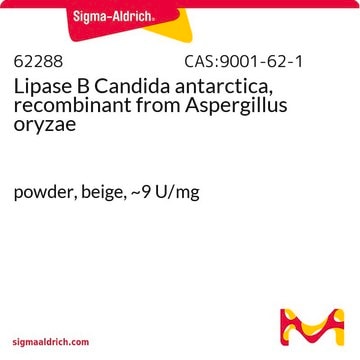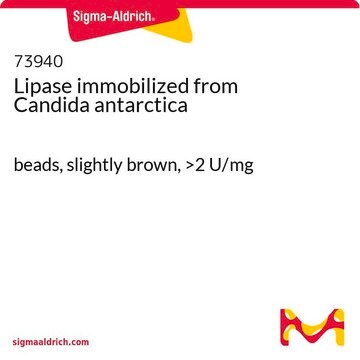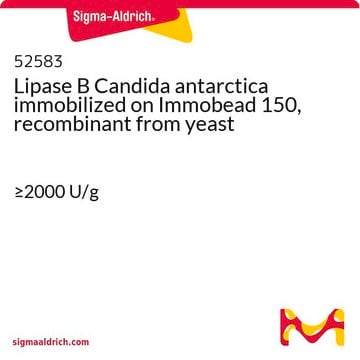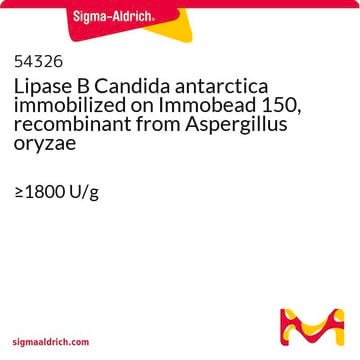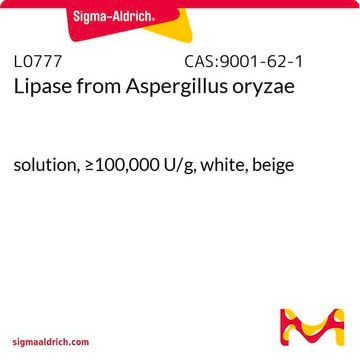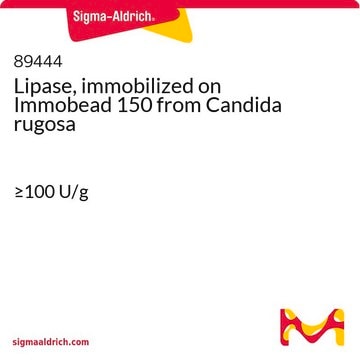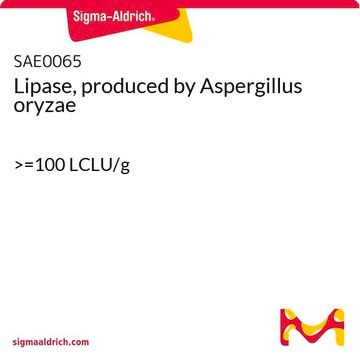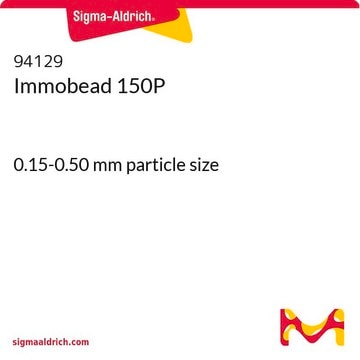L4777
Lipase acrylic resin
≥5,000 U/g, recombinant, expressed in Aspergillus niger
Sinónimos:
Novozyme 435
About This Item
Productos recomendados
recombinante
expressed in Aspergillus niger
formulario
solid
actividad específica
≥5,000 U/g
características de los productos alternativos más sostenibles
Waste Prevention
Design for Energy Efficiency
Learn more about the Principles of Green Chemistry.
sustainability
Greener Alternative Product
matriz
macroporous acrylic resin
aplicaciones
diagnostic assay manufacturing
categoría alternativa más sostenible
temp. de almacenamiento
2-8°C
InChI
1S/C11H9N3O2.Na/c15-8-4-5-9(10(16)7-8)13-14-11-3-1-2-6-12-11;/h1-7,16H,(H,12,14);/q;+1/b13-9-;
Clave InChI
QWZUIMCIEOCSJF-CHHCPSLASA-N
Categorías relacionadas
Descripción general
Aplicación
- as a catalyst to carry out the esterification of pLACT with butyric acid
- as an additive in fully hydrogenated canola oil (FHCO) and high oleic sunflower oil (HOSO) blend for enzymatic interesterification
- to study its effect on the degree of oleic acid conversion upon esterification
Acciones bioquímicas o fisiológicas
Palabra de señalización
Danger
Frases de peligro
Consejos de prudencia
Clasificaciones de peligro
Resp. Sens. 1
Código de clase de almacenamiento
11 - Combustible Solids
Clase de riesgo para el agua (WGK)
WGK 1
Punto de inflamabilidad (°F)
Not applicable
Punto de inflamabilidad (°C)
Not applicable
Certificados de análisis (COA)
Busque Certificados de análisis (COA) introduciendo el número de lote del producto. Los números de lote se encuentran en la etiqueta del producto después de las palabras «Lot» o «Batch»
¿Ya tiene este producto?
Encuentre la documentación para los productos que ha comprado recientemente en la Biblioteca de documentos.
Los clientes también vieron
Nuestro equipo de científicos tiene experiencia en todas las áreas de investigación: Ciencias de la vida, Ciencia de los materiales, Síntesis química, Cromatografía, Analítica y muchas otras.
Póngase en contacto con el Servicio técnico